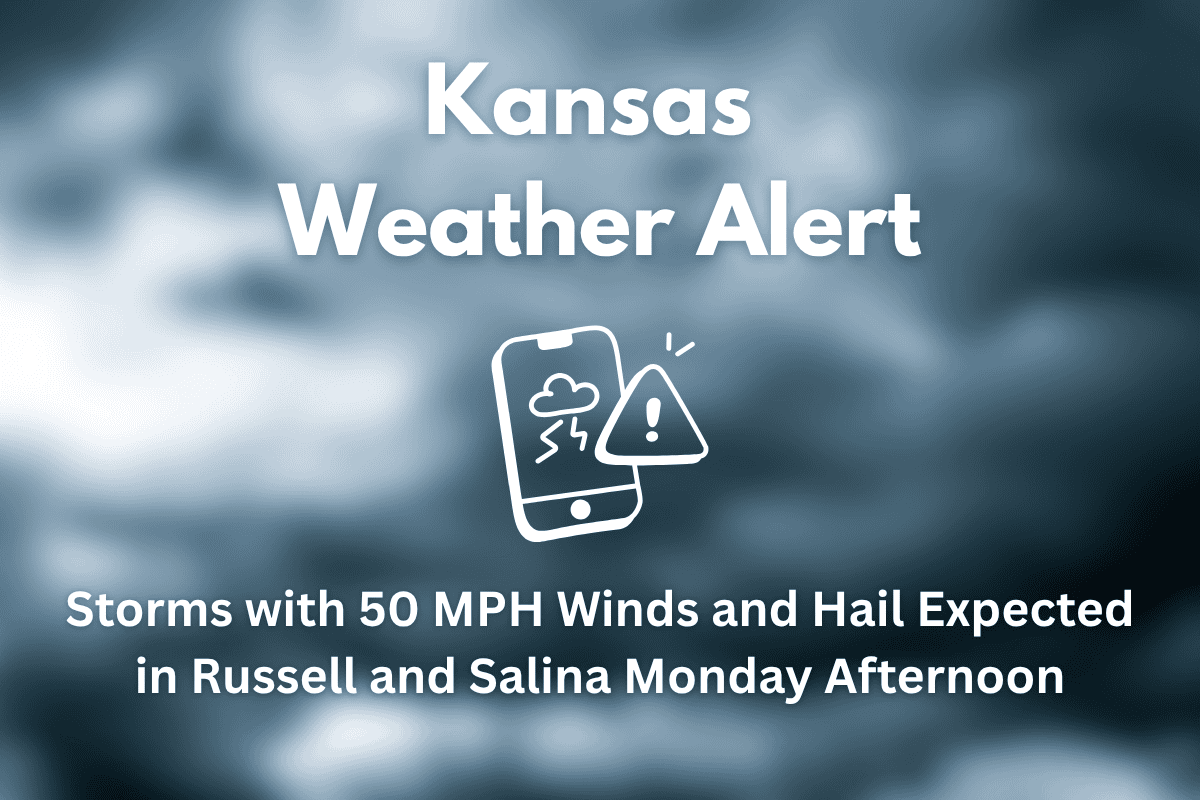Kansas residents should prepare for thunderstorms with gusty winds and small hail starting Monday afternoon and lasting into early Tuesday morning. The National Weather Service in Wichita has issued a weather alert, highlighting the risk for 50 mph wind gusts, brief heavy rain, and isolated hail, especially in the north and west of the state.
Details of the Storm Threat
The storms are expected to develop along a weak cold front, beginning around 2 p.m. Monday and continuing through 7 a.m. Tuesday. The highest risk areas include Russell, with a 70% chance of storms, and Salina, where the chances are 54%. These areas will experience gusty winds and brief but intense downpours. Hail may also be present in some storms.
While the Wichita metro area faces a lower risk, with only an 11% chance of storms, residents in Hutchinson (25%) and Pratt (26%) should stay alert as conditions could change quickly. Farther east, cities like Topeka (38%) and Emporia (19%) could see scattered showers, but the intensity is expected to be much lower.
Precautions for Residents
If you have outdoor plans, particularly in higher-risk zones like Russell and Salina, keep an eye on the weather and be prepared to seek shelter quickly. The NWS advises having a shelter plan in place and staying updated on the latest weather information via local alerts.
The strongest storms are expected to stay north and west, with southeast Kansas, including cities like Coffeyville and Chanute, seeing minimal storm activity and a near-zero chance of severe weather.
What to Expect Beyond Monday
As the cold front moves through, more updates are expected throughout Monday. If the storms intensify, additional severe weather alerts may be issued. Residents should remain aware of changing conditions and continue to monitor weather updates for the latest warnings.
Thunderstorms with gusty winds, hail, and heavy rain are expected to impact parts of Kansas on Monday afternoon into Tuesday morning. Areas like Russell and Salina are at the highest risk, and residents in these regions should prepare for changing conditions. Stay safe by monitoring weather updates and having a shelter plan in place.












